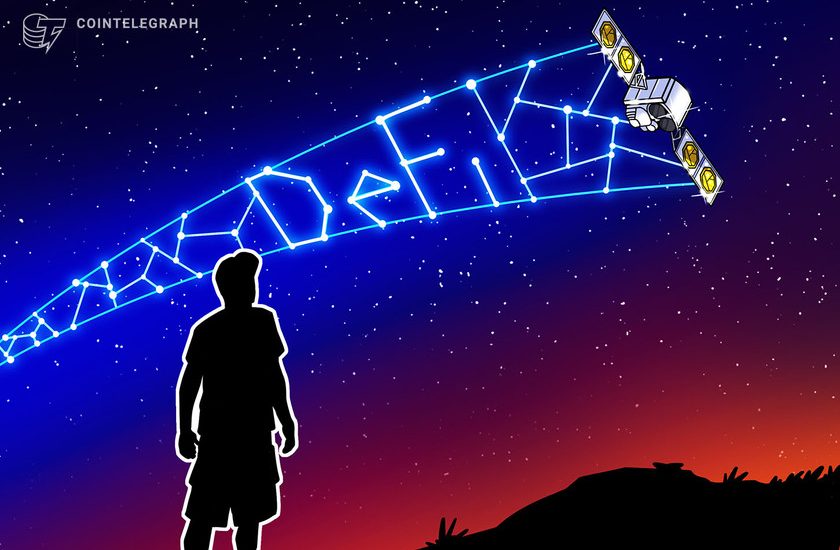- February 1, 2021
- Posted by: admin
- Category: BitCoin, Blockchain, Cryptocurrency, Investments


The derivatives platform uses AMMs to optimize for large DeFi traders.
After the success of the automated market maker, or AMM, model for building decentralized spot exchanges, several projects are now racing to take this concept to the world of derivatives. One of these is Futureswap, an AMM-based futures exchange specifically designed for large trades.
Futureswap has recently launched Version 2 of its platform, which features a unique oracle design that allows to increase capital efficiency for large trades. Benji Richards, co-founder of Futureswap, explained the idea to Cointelegraph:
“When you think of AMM people think of the constant-product like Uniswap. The main difference with ours is we took the AMM and didn’t use the same formula. We designed it around the thesis that large trades should not be penalized for being large trades, which then will create a better ecosystem for what we call whale traders or massive arbitrageurs.”
AMM platforms use special formulas called “bonding curves” to determine how each trade changes an asset’s price. Uniswap’s formula is the simplest, as it attempts to keep the product of the two sides of the pools equal to a constant. Graphically, such a formula defines a hyperbola — a shape that approaches both infinity and zero on either side, without ever reaching them. While this is great for general-purpose AMMs, this curve is inefficient for large trades, as slippage rises exponentially with large order sizes.
Still, using a more efficient curve requires adding another constraint to make sure it is effective. In the case of Curve Finance, for example, the bonding curve can be made dramatically more efficient if the platform’s limited to pegged assets — various iterations of U.S. dollars or wrapped cryptocurrencies. With Futureswap, a similar constraint is provided by custom-built oracles.
Richards said that this was necessary to avoid the issues with off-the-shelf solutions. “Most on-chain oracles have a delay, so if you’re going to use that for anything with leverage, it likely will not work,” he said. An Oracle-based design has been attempted by Bancor for its impermanent loss protection system, but it appears to not have been successful due to front-running issues.
Futureswap’s oracles are unique in that they allow to capture the small price fluctuations between two Ethereum blocks, which are spaced out by 15 seconds. It’s a similar mechanism to meta-transactions that allow others to pay for someone’s gas fee, Futureswap co-founder Derek Alia explained:
“The idea is that you sign some parameters, you say, ‘I want to do this action with this information’. You sign that with your private key. That’s basically like a ball that someone passes to the Ethereum Blockchain.”
With Futureswap trades, users will essentially embed the oracle price data that they used to create that transaction, and the system guarantees that the value was valid when the transaction was created. By using the oracle price as an anchor, the platform can use much more aggressive bonding curves with lower slippage. Alia added:
“We need less capital to be more competitive with someone like Binance. Binance maybe needs $6 billion in their order book. We would need $300 million — or something like that — to have the same slippage.”
Like other AMMs, Futureswap also has passive liquidity providers who receive a fee for each trade going through the platform. Traders interact with these liquidity pools, with the ability to enter both long and short positions with up to 10x leverage. Though this may be considered low by cryptocurrency standards, this ceiling will be raised over time, Richards said.
Futureswap is still in the early stages of release, which is also reflected in its token model. Users and liquidity providers currently receive a non-transferable token that allows participating in the platform’s governance, as well as obtain utility through discounts. The team boasted of over $500 million in total volume so far, without any direct incentivization. Alia concluded:
“I think what’s really cool is that a lot of people who are a little bit more ‘degen’ will come in, ask if the token is transferable and how they can buy and sell it. They find out they can’t, and then they leave.”
